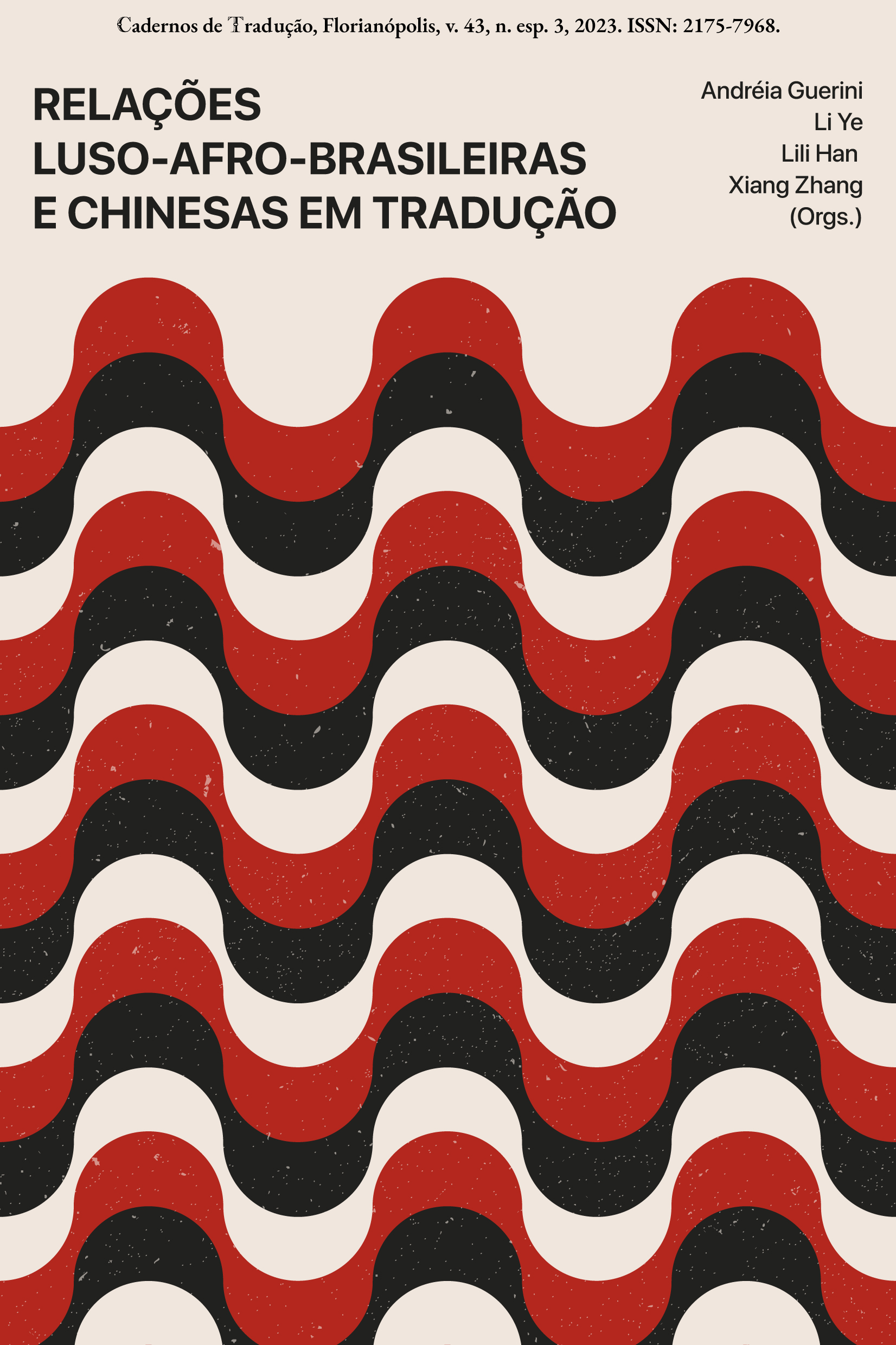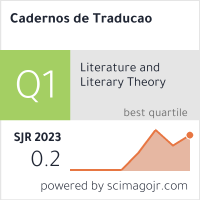The correspondences and non-correspondences between Chinese and Portuguese language and culture: An analysis of botanical terms
DOI:
https://doi.org/10.5007/2175-7968.2023.e94952Keywords:
translation, Chinese language, Portuguese language, hyperonym, pragmaticsAbstract
Despite belonging to two totally different language families, there is always a translatability between Chinese and Portuguese. The first Portuguese-Chinese dictionary by Matteo Ricci and Michele Ruggieri dating from the 17th century is the most persuasive evidence of this fact. On the one hand, there is no shortage of translation masterpieces today, and on the other hand, cultural exchange is intensifying at a rapid pace as the globalization process deepens. It is becoming urgent to pay attention to the differences existing in the two different cultures and the non-correspondences in their translation. Partial knowledge about another culture can lead to imprecise translation and result in equivocation of other related concepts in sequence. Undoubtedly, biological and cultural differences cause the phenomenon of non-correspondence the most. However, searching for similar concepts in the target language culture is also used as a frequent strategy, facilitating both the translator's work and the target audience's understanding. However, translation facilitation can bring misunderstandings. The non-matching of hyperonyms and hyponyms between the two cultures makes the translation of some concepts somewhat difficult. This paper aims to exemplify some of the issues of non-correspondence between the two languages, with the objective of contributing to a better understanding of the two cultures and the enhancement of translation between Chinese and Portuguese.
References
Dalgado, Sebastião Rodolfo. Glossário Luso-Asiático. Coimbra: Imprensa da Universidade, 1919.
Franco Aixelá, Javier. “Itens culturais-específicos em tradução”. Tradução de Mayara Matsu Marinho & Roseni Silva. In-Traduções, 5(8), p. 185-218, 2013.
Jatobá, Júlio Reis. “Poéticas do Traduzir a, na e para a China: uma proposta”. Cadernos de Tradução, 39(esp.), p. 120-147, 2019. DOI: https://doi.org/10.5007/2175-7968.2019v39nespp120
Kirschner, Roland & Hsieh, Shelley Ching-yu. “Ginkgo, Apricot, and Almond: Change of Chinese words and meanings from the kernel’s perspective”. Ethnobotany Research & Applications, 10, p. 321-328, 2012.
Lang, Sida & Sun, Yuqi. “Estranhamento como estratégia de tradução: categorização do estranhamento na poesia leminskiana e a sua recriação na língua chinesa”. Cadernos de Tradução, 40(3), p. 154-186, 2020. DOI: https://doi.org/10.5007/2175-7968.2020v40n3p154
Li, Yanmei & Liu, Qinglin. “Prunus mume: History and culture in China”. Chronica Horticulturae, 51(3), p. 28-35, 2011. https://www.ishs.org/chronica-horticulturae/vol51nr3
Mai, Ran. Ensino de Chinês a Falantes de Português: O caso da Universidade de Aveiro. Tese (Doutorado em Linguística). Departamento de Línguas e Culturas, Universidade de Aveiro, Aveiro. 2012. http://hdl.handle.net/10773/9842
Martins, Sabrina de Cássia. “A variação denominativa na terminologia da fauna e da flora: (as)simetrias linguístico-culturais”. Cadernos de Tradução, 38(2), p. 241-262, 2018. DOI: https://doi.org/10.5007/2175-7968.2018v38n2p241
Mao, Dun. “Sobre os métodos da tradução de livros literários”. Tradução de Ye Li. Cadernos de Tradução, 39(2), p. 379-388, 2019. DOI: https://doi.org/10.5007/2175-7968.2019v39n2p379
Wang, Suoying. Lexicultura na Língua Chinesa e na Lexicografia Bilingue de Chinês-Português. Tese (Doutorado em Linguística, especialização em Lexicologia, Lexicografia e Terminologia). Faculdade de Ciências Humanas e Sociais, Universidade Nova de Lisboa, Lisboa, 2015. http://hdl.handle.net/10362/17164
Wang, Suoying & Lu, Yanbin. “Equivalência contextual na tradução entre Chinês e Português: análise de alguns casos concretos”. Diacrítica, 34(3), p. 156-179, 2020. DOI: https://doi.org/10.21814/diacritica.553
Wu, Zhongwei. (Org.). Chinês Contemporâneo. 3. ed. Beijing: Sinolíngua, 2015.
Xīn huá zì diǎn [Dicionário Xinhua]. 10. ed. Beijing: Shāng wù yìn shū guǎn [The Commercial Press], 2004.
Zhang, Jianbo & Lou, Zhichang. “Tradução das palavras com carga cultural no romance 活着 (huó zhe, Viver) a partir da perspectiva da eco-translatologia”. Cadernos de Tradução, 43(1), p. 1-22, 2023. DOI: https://doi.org/10.5007/2175-7968.2023.e86532
Jin, Guoping金国平. “葡萄牙语和西班牙语中关于“松江布”的记载及其吴语词源考” [g(c)anga”as Recorded in Portuguese and Spanish and Investigation into Its Origin in Wu Dialect]. 史林[Shi Lin] (01), p. 52-60, p. 220, 2015.
Zhang, Jiao张姣. “说‘醋’” [Falar sobre “cù”]. 文教资料 [Wenjiao Ziliao] (Z1), p. 56-58, 2017.
Downloads
Published
How to Cite
Issue
Section
License
Copyright (c) 2023 Cadernos de Tradução

This work is licensed under a Creative Commons Attribution 4.0 International License.
Copyright Notice
Authors hold the copyright and grant the journal the right for their articles' first publication, being their works simultaneously licensed under the Creative Commons Attribution License (CC BY), which allows the sharing of such works with its authorship acknowledged and its initial publication in this journal.
Authors are allowed to enter into separate additional contractual arrangements for the non-exclusive distribution of the journal's published version of the work (e.g., post it to an institutional repository or as a book chapter, with an acknowledgment of its initial publication in this journal).










































